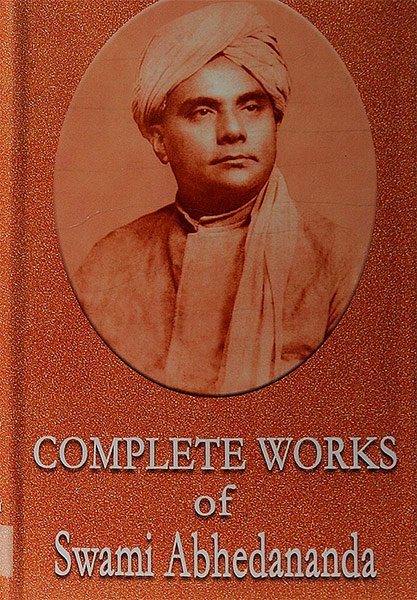Complete works of Swami Abhedananda
by Swami Prajnanananda | 1967 | 318,120 words
Swami Abhedananda was one of the direct disciples of Sri Ramakrishna Paramhamsa and a spiritual brother of Swami Vivekananda. He deals with the subject of spiritual unfoldment purely from the yogic standpoint. These discourses represent a study of the Social, Religious, Cultural, Educational and Political aspects of India. Swami Abhedananda says t...
Preface
The Steps towards Perfection is a new book, containing three lectures on the ultimate goal of the human life, namely The Steps towards Perfection, What is Perfection, and What is Nirvana. Swami Abhedananda has shown the seven steps towards the perfection or mukti and has said that the seventh step is the path of the spiritual illumination, which is known as the Divine realization or the Brahmanubhuti. The other steps i.e. first to sixth ones are helpful to the seventh one. In the seventh step, the highest nature of the human being runs with tremendous force like a mighty river running towards the ocean of the Absolute, the course of which nothing can restrain. But the highest step or the ultimate aim of the human life is to attain to the God-consciousness, and this God-consciousness can be attained even in this mundane life.
To make it explicit Swami Abhedananda has said in the first lecture that the seven steps are generally conceived for the progress in the path of the Divine illumination, or the Godrealization, and they are: (1) the intense longing for the knowledge of the absolute Truth, and the awakening of the soul, (2) the purufication of the mind or heart, (3) the practice of truthfulness, and the disinterested love for humanity, (4) the right discrimination, (5) the dispassion of the will, (6) the spiritual enlightenment, and (7) the spiritual illumination or the attainment of the God-consciousness. Now, these are the steps, and the seventh one is not really the step, but the highest achievement or the goal. The Swami says that these steps or the grades of the spiritual sadhana must sincerely be practised by every seeker of the Divine knowledge, and then he will be able to correct the error of ignorance. The Swami has explained that these grades of sadhana really prepare the ground for the dwaning of the spiritual illumination, and so the seekers and lovers of the Brahman-knowledge should practise them.
In the second lecture, What is Perfection, Swami Abhedananda has said that it is by comparison we come to know that there are different grades in the physical, intellectual, moral or spiritual planes of human existence. But the moment we come to know about the different grades, we stop in one particular grade, and try to struggle to step forward towards the next higher grade, and this striving helps men to reach the final grade or goal which consoles them, and confers upon them the permanent peace and happiness.
In the third lecture, What is Nirvana, the Swami has discussed about the Buddhistic conception of mukti, and has told that it is not the void or non-existent something (sunya), but is suchness or thatness (tathata). The conception of Nirvana is not a new one, or not a new product of the Buddhist investigation, but the idea of Nirvana was in existence in the vedic literature. In the Upanishads, we find the word ‘Brahman-Nirvana’ which means the attainment of the knowledge of the absolute Brahman which eternally removes the sorrows and all kinds of desires. Buddha also used the term Nirvana in the same sense. He said that Nirvana can be attained to by the cessation of tanha or trishna i.e. all desires and sorrows.
Swami Prajnanananda
FAQ (frequently asked questions):
Which keywords occur in this article of Volume 2?
The most relevant definitions are: Nirvana, Brahman, human life, mukti, sadhana, soul; since these occur the most in “preface” of volume 2. There are a total of 10 unique keywords found in this section mentioned 21 times.
Can I buy a print edition of this article as contained in Volume 2?
Yes! The print edition of the Complete works of Swami Abhedananda contains the English discourse “Preface” of Volume 2 and can be bought on the main page. The author is Swami Prajnanananda and the latest edition is from 1994.
